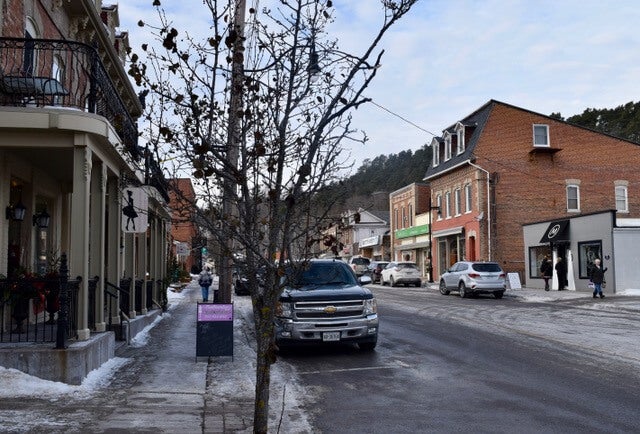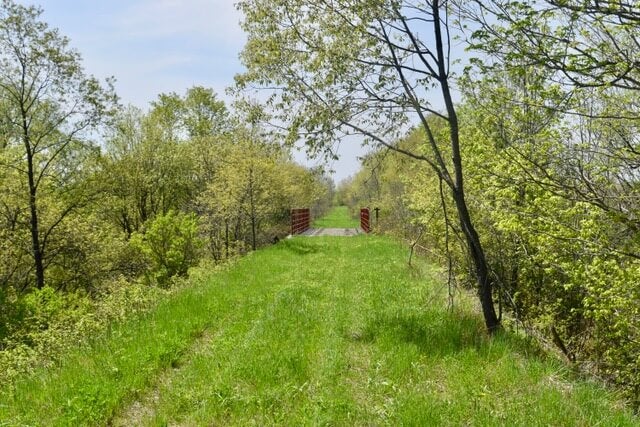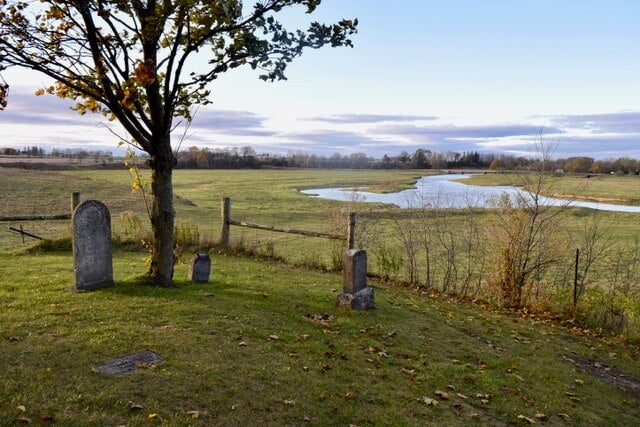
Main Street, Warkworth, Ontario
Earlier this year I was asked to name some of the key changes, actions or themes affecting heritage conservation in Ontario over the last generation or so.
One I mentioned: cultural heritage landscapes. In one form or another they’ve been around a long time, but now seem to be all the rage. Both in concept and in application, CHLs are a still emerging phenomenon here and elsewhere, a development both exciting and challenging.
In this province the term “cultural heritage landscape” seems to have entered the official lexicon, from heritage charters and professional practice, sometime in the 1990s. At the time of the Ontario Heritage Policy Review (1987-1990), our first comprehensive review of the policy and legislative framework for heritage conservation here, the CHL term was not in wide usage. The review’s report, A Strategy for Conserving Ontario’s Heritage, does not use the term, although it does reference “historic landscapes” and “natural, scenic, and cultural landscapes.”[1]

By the mid-1990s though, with the introduction by the province of broad policy statements to guide land-use planning, CHLs make their debut in the first provincial cultural heritage policies. The Provincial Policy Statement (1996, amended in 1997) said:
2.5 Cultural Heritage and Archeological Resources
2.5.1 Significant built heritage resources and cultural heritage landscapes will be conserved.
2.5.2 …
Cultural heritage landscape:
means a defined geographical area of heritage significance which has been modified by human activities. Such an area is valued by a community, and is of significance to the understanding of the history of a people or place.[2]
The 2005 amendments to the Ontario Heritage Act pointedly did not include “cultural heritage landscape” or indeed any term for particular types of cultural heritage property or resource (apart from “archaeological site” and “marine archaeological site”, where special provisions applied).[3]
The same year the PPS was updated and included an expanded CHL definition:
Cultural heritage landscape:
means a defined geographical area of heritage significance which has been modified by human activities and is valued by a community. It involves a grouping(s) of individual heritage features such as structures, spaces, archeological sites and natural elements, which together form a significant type of heritage form, distinctive from that of its constituent elements or parts. Examples may include, but are not limited to, heritage conservation districts designated under the Ontario Heritage Act; and villages, parks, gardens, battlefields, mainstreets and neighbourhoods, cemeteries, trailways and industrial complexes of cultural heritage value.
Note that, unlike the 1996/97 original, this expanded definition is a hybrid. The original was an intensional definition — one that tries to capture the essence of a term. “A defined geographical area”, “modified by human activities” and “valued by a community” are the key aspects of that definition. The 2005 definition keeps the intensional part, adding to it with the language that a CHL “involves a grouping(s) of individual heritage features…” But it then goes on to give an extensional definition — one that lists the kinds of things the term covers. Hence the “Examples may include …” Note that heritage conservation districts designated under the OHA are first on the list and can be seen as an exemplar of a cultural heritage landscape.
CHLs are also referenced in the 2006 Ontario Heritage Tool Kit. The Tool Kit guide to heritage conservation districts has, not surprisingly, many references to cultural heritage landscapes. Interestingly though, the Took Kit guide to designating individual properties does not use the term, although there are two mentions of “cultural landscapes”, one of which is a cemetery. This would suggest that the ministry sees Part V (rather than Part IV) designation as the principal OHA vehicle for protecting CHLs, which tend to transcend the boundaries of a single site or property.
Heritage Resources in the Land Use Planning Process, the Tool Kit guide on the cultural heritage and archeology policies in the 2005 PPS, devotes five pages to CHLs. Citing guidelines adopted by the UNESCO World Heritage Committee in 1992, the guide describes “three primary landscape types”: designed landscapes, evolved landscapes and associative landscapes. The guide examines the PPS definitions related to CHLs, talks about defining their boundaries, and identifies a number of heritage/planning tools for their conservation.
In this decade the Provincial Policy Statement, 2014, further refined the CHL definition:
Cultural heritage landscape:
means a defined geographical area that may have been modified by human activity and is identified as having cultural heritage value or interest by a community, including an Aboriginal community. The area may involve features such as structures, spaces, archaeological sites or natural elements that are valued together for their interrelationship, meaning or association. Examples may include, but are not limited to, heritage conservation districts designated under the Ontario Heritage Act; villages, parks, gardens, battlefields, mainstreets and neighbourhoods, cemeteries, trailways, viewsheds, natural areas and industrial complexes of heritage significance; and areas recognized by federal or international designation authorities (e.g. a National Historic Site or District designation, or a UNESCO World Heritage Site).
Note that the intensional/essence part of the definition is still there, although “involves a grouping(s) of individual heritage features … which together form a distinctive type of heritage form…” is replaced with the (much better) wording “may involve features … that are valued together for their interrelationship, meaning or association.” The extensional/list part is longer and now makes up half the definition.

Abandoned railway line near St. Marys, Ontario
Okay, it seems we’ve got a good — if rather complex — CHL definition. A definition that is now being put to the test by, as noted above, a belated and ballooning interest in cultural heritage landscapes in Ontario, often outside of the familiar HCD structure.
In the face of all this activity, mainly the result of proposals and initiatives by municipalities, there is an unquestioned need for better guidelines on CHLs — how to apply the PPS definition, what heritage and planning tools to use, how to engage owners and the public, how exactly to conserve a place that is often so fundamentally dynamic.
The Ministry of Tourism, Culture and Sport seems to recognize this need. They have been working — for a too long time — on an updated version of Heritage Resources in the Land Use Planning Process, which will reflect the current PPS, 2014, and include an expanded section on CHLs.
The ministry has also committed to producing new guidance material on cultural heritage landscapes. In the province’s 2016 Culture Strategy there is a promise to: “Develop additional tools to help communities identify and protect their cultural heritage, including guidance on cultural heritage landscapes, … to support municipalities in implementing the Provincial Policy Statement, 2014. (emphasis added)
Likewise, one of the action items of the 2017 Development Approvals Roundtable Action Plan is: “MTCS will produce guidance on the identification, evaluation and management of cultural heritage landscapes by May 2018 [sic]. A draft will be shared with representatives of the development industry and municipal sector prior to finalizing.” (emphasis added)
Whether this dual commitment is intended to be met through the now-close-to-final revision of Heritage Resources in the Land Use Planning Process — or, as some sources suggest, by a new stand-alone guide on CHLs — remains to be seen. Hopefully the latter!
Next time: We’ll look at what the Ontario Municipal Board (now LPAT) has had to say about CHLs.

Cemetery, Plattsville, Ontario
Notes
Note 1: For more on the influential report of the Ontario Heritage Policy Review see the OHA+M article ”The ‘black baby book’ at 25”. That 1990 report used a tripartite definition of “immovable heritage”: structures, sites, and areas. Areas were “streetscapes, neighbourhoods, gardens, lakes, and rivers and other natural, scenic and cultural landscapes.” Today the usual tripartite breakdown of heritage properties/historic places is: structures/built heritage, cultural heritage landscapes, and archeological and sacred sites.
Note 2: All the iterations of the PPS can be found here.
Note 3: I have written about the reasons for this here.